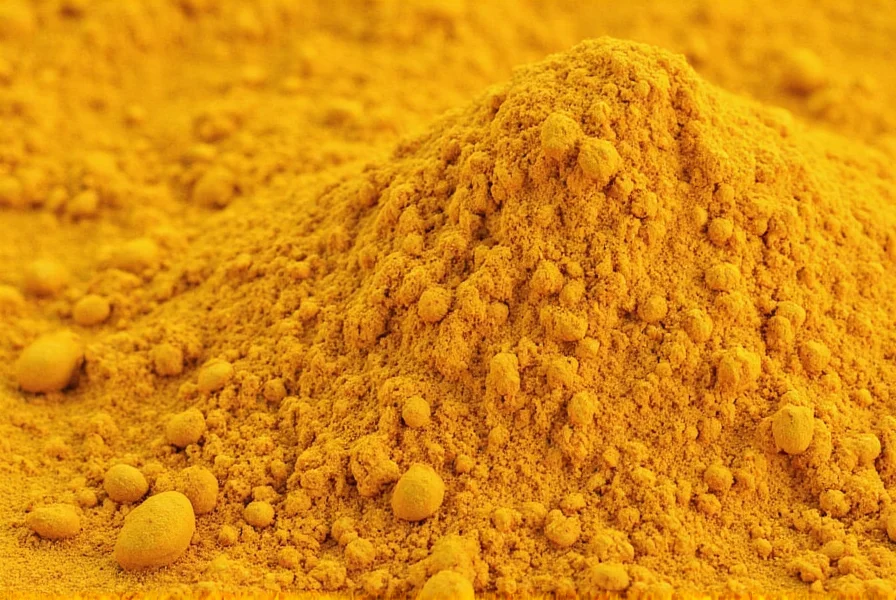When exploring recipes using turmeric, understanding this golden spice's culinary properties transforms ordinary meals into extraordinary experiences. Turmeric's earthy, slightly bitter flavor profile works best when combined with fats and complementary spices that enhance its natural characteristics. This ancient spice has been a cornerstone of South Asian, Middle Eastern, and Southeast Asian cooking for centuries, valued for both its color and distinctive taste.
The Culinary Science of Turmeric
Turmeric contains curcumin, the compound responsible for its brilliant yellow hue and earthy flavor. When cooking with turmeric, remember that heat and fat increase its solubility and flavor release. Professional chefs recommend blooming turmeric in oil with complementary spices like cumin or mustard seeds for 30-60 seconds before adding other ingredients. This technique maximizes flavor extraction while reducing any potential bitterness.
| Recipe Type | Optimal Turmeric Amount | Best Flavor Pairings |
|---|---|---|
| Liquid-based (soups, broths) | 1-2 tsp per 4 servings | Ginger, garlic, black pepper, coconut milk |
| Dry preparations (rice, roasted veggies) | 1/2-1 tsp per 4 servings | Cumin, coriander, cinnamon, olive oil |
| Raw applications (dressings, dips) | 1/4-1/2 tsp per 4 servings | Lemon juice, tahini, honey, yogurt |
Five Essential Turmeric Recipes Worth Mastering
Golden Turmeric Milk
This comforting beverage showcases turmeric's versatility beyond savory applications. Combine 1 cup milk (dairy or plant-based), 1/2 tsp turmeric, 1/4 tsp cinnamon, pinch of black pepper, and 1 tsp honey in a small saucepan. Heat gently without boiling, whisking constantly for 3-4 minutes. The black pepper significantly increases curcumin absorption while honey balances turmeric's natural bitterness. This simple easy turmeric recipe for beginners makes an excellent evening ritual.

Turmeric Roasted Vegetable Medley
Transform ordinary vegetables into a vibrant side dish with this straightforward preparation. Toss 4 cups mixed vegetables (sweet potatoes, cauliflower, and carrots work exceptionally well) with 1.5 tbsp olive oil, 1 tsp turmeric, 1/2 tsp cumin, salt, and pepper. Roast at 400°F (200°C) for 25-30 minutes until caramelized. The high heat creates delicious Maillard reactions while the turmeric imparts both color and subtle earthiness. This healthy turmeric side dish pairs perfectly with grilled proteins.
Lemon-Turmeric Rice Pilaf
Elevate basic rice with this aromatic preparation that serves as an excellent base for many meals. Sauté 1/2 onion in 1 tbsp oil until translucent, add 1 cup basmati rice and toast for 1 minute. Stir in 1/2 tsp turmeric, then add 1.5 cups broth and bring to boil. Reduce heat, cover, and simmer for 15 minutes. Remove from heat and let stand 5 minutes before fluffing with fork. Finish with juice of 1/2 lemon and fresh cilantro. This flavorful turmeric rice recipe works beautifully as a standalone dish or accompaniment.
Turmeric-Lentil Soup
This hearty soup demonstrates turmeric's ability to enhance both flavor and visual appeal in liquid preparations. Sauté 1 diced onion, 2 minced garlic cloves, and 1 tbsp grated ginger in olive oil. Add 1 tsp turmeric, 1/2 tsp cumin, and 1 cup rinsed red lentils. Pour in 4 cups vegetable broth and bring to simmer. Cook 20-25 minutes until lentils are tender. Stir in 1 cup coconut milk before serving. The coconut milk creates a luxurious texture while balancing turmeric's earthiness. This nutritious turmeric soup recipe makes excellent meal prep.
Turmeric-Tahini Dressing
Create a vibrant dressing that elevates simple salads with minimal effort. Whisk together 1/4 cup tahini, 2 tbsp lemon juice, 1/2 tsp turmeric, 1 small minced garlic clove, 1/4 tsp maple syrup, and enough water to reach desired consistency. This versatile turmeric dressing recipe works equally well as a salad dressing, vegetable dip, or sandwich spread. The tahini's nuttiness perfectly complements turmeric's earthy notes.
Practical Tips for Cooking with Turmeric
Working with turmeric requires some special considerations to maximize its culinary potential while minimizing common frustrations. Always wear gloves when handling fresh turmeric root to prevent stubborn stains on your hands. When using powdered turmeric, add it early in the cooking process to allow its flavor to mellow and integrate with other ingredients. For best results, combine turmeric with black pepper—piperine in black pepper increases curcumin absorption by up to 2000%.
Store turmeric properly to maintain freshness—keep powdered turmeric in an airtight container away from light and heat, where it retains optimal flavor for 6-12 months. Fresh turmeric root lasts 2-3 weeks when stored in the refrigerator's crisper drawer. When substituting fresh for dried turmeric, use a 3:1 ratio (fresh: dried) as fresh turmeric has more subtle flavor.
Avoiding Common Turmeric Cooking Mistakes
Many home cooks make preventable errors when incorporating turmeric into recipes. Using excessive amounts creates overwhelming bitterness rather than pleasant earthiness. Adding turmeric too late in cooking prevents proper flavor development. Neglecting to pair turmeric with fats reduces both flavor release and potential health benefits. Cooking turmeric at excessively high temperatures creates unpleasant bitterness. For optimal results in everyday turmeric cooking applications, follow tested recipes until you understand how turmeric behaves in different culinary contexts.











 浙公网安备
33010002000092号
浙公网安备
33010002000092号 浙B2-20120091-4
浙B2-20120091-4